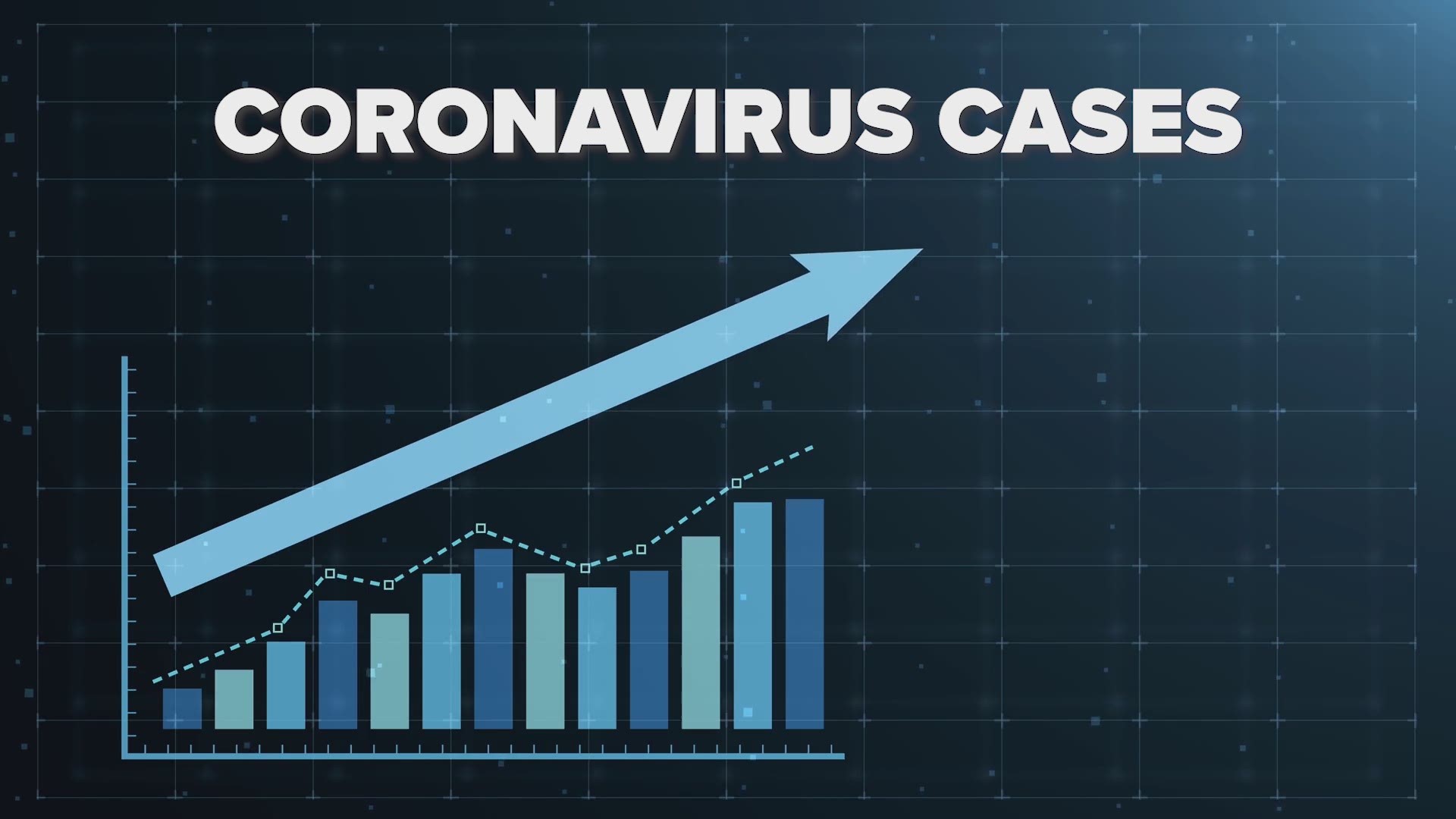WASHINGTON, D.C., USA —
As parts of the country see spikes in coronavirus cases, deaths have so far remained much lower than the earlier months of the pandemic.
According to data from The New York Times, states reported seven-day new-death averages higher than 2,000 a day for about half of April. As of July 10, that seven-day average peaked at 608.
President Donald Trump recently touted this trend on Twitter, claiming the mortality rate in the U.S. is "just about the lowest in the world."
The U.S has reported more than 132,000 deaths, more than any other country in the world. When adjusted for population, the death rate falls behind eight other countries, including the U.K., Italy and Sweden, but remains higher than most other countries, according to data from The New York Times.
But is this decrease in deaths actually a hopeful sign in the fight against the virus? Experts say we’re not in the clear yet. Here’s why fewer deaths don't give the full picture of the current situation.
First, deaths lag behind initial infections.
According to Dr. Amesh Adalja, Senior Scholar at Johns Hopkins' Center for Health Security, the rate of death does not measure current infection conditions.
"What we've seen in the past few weeks is a changing in the epidemiology and a changing in the rate of deaths. You have to remember, however, that that's a lagging indicator, meaning that it takes some time for people to get sick, to get hospitalized and then die from this. So you cannot look at deaths to get a snapshot of what's going on currently," he said.
Second, there are more young people getting infected who are less likely to die from the virus.
People between the ages of 18 and 29 make up 19.2 percent of total coronavirus infections, the second-highest percentage of all age groups, according to the CDC. However, this group only accounts for 0.5 percent of deaths.
"The virus has shifted from the older nursing home population to the younger, healthier population, which we know is less likely to die from the virus, so that could be one of their reasons the mortality rate is dropping," said medical expert and cardiologist Dr. Payal Kohli.
Though less likely to die from this virus, people in this age group, particularly those with less severe symptoms, could still spread it to more vulnerable populations.
Increased testing also means officials are identifying more non-fatal cases, making the percentages of deaths appear lower when compared to total cases.
In a recent press briefing, White House press secretary Kayleigh McEnany cited the "case fatality rate," in the U.S., claiming it was lower than France and Italy.
In a tweet, President Trump cited an article from The Washington Times which identified this number as a ratio of cases and deaths.
"The number of cases that we're diagnosing is actually going up, we're doing more widespread testing. So that denominator or the number of active infections that we're diagnosing that could be asymptomatic is going up. So it makes that (fatality) percentage look like it's actually going down," Dr. Kohli said.
While doctors also have a better understanding of how to treat the virus with medications like dexamethasone and remdesivir, just because the death rate has decreased doesn’t necessarily mean we’ve made definitive progress in the fight against COVID-19.
Plus, many experts believe these numbers will increase in the coming weeks, following spikes in cases in many Southern states.
In fact, the seven-day averages of nationwide deaths has already been rising daily since July 5, according to New York Times data.
"We really shouldn't be celebrating anything at this point. You can't look at the death rate now and say that this is not going to be something that changes or increases based on the number of cases in the hospitalization rates we're seeing in certain states," Dr. Adalja said.

